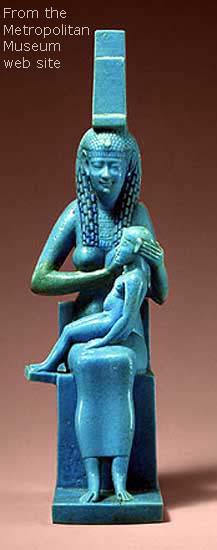
For the ancient Egyptians the image of the goddess Isis suckling her son Horus was a powerful symbol of rebirth that was carried into the Ptolemaic period and later transferred to Rome, where the cult of the goddess was established. This piece of faience sculpture joins the tradition of pharaonic Egypt with the artistic style of the Ptolemaic period. On the goddess's head is the throne hieroglyph that represents her name.